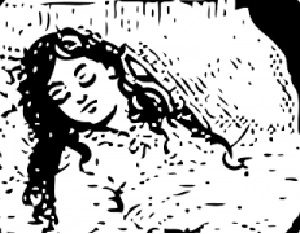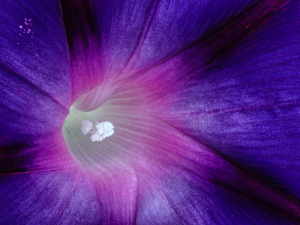Anuvaka 5 of Brahman Valli of Taittiriya Upanishad discusses two types of happiness: Anandamaya kosa and Atmananda. Interior to and subtler than the intellect sheath is Anandamaya kosa (bliss sheath) which is considered as Atma. Intellect sheath is relegated to the status of non-Atma. Bliss-sheath is subtle and assumes the shape of food-sheath (gross body). Its head is priya (joy), lefthand side is moda (hilarity), righthand side is pramoda (enjoyment), bliss is the trunk, and Brahman is the tail, the foundation. The state of deep sleep is bliss sheath. There is an experience of happiness a waking person recollects from memory.
Tag Archives: atmananda
Vairagya-ananda
Vairagya-ananda is an oxymoron. Not quite. It is not uncommon that men with few possessions are happier than those with more possessions.
One of the impurities of the mind is that it is a wandering mind. A wandering mind may not enjoy even if the content is enjoyable. Controlling it is an important spiritual discipline. Arjuna says (BG 6.34) that it is very difficult to control the mind, as difficult as to control the wind. He expects a reply from Sri Krishna who while concurring with Arjuna (like a good teacher) gives a remedy (6.35) that the mind can be controlled by practice and dispassion (vairagya). Dispassion is one of the four qualifications for Jnana yoga. Continue reading
Shri Atmananda (Krishna Menon)
One of the greatest teachers of the twentieth century
by Philip Renard
I am pleased to present the first of a two-part article from Philip Renard, about the Direct Path master, Atmananda Krishna Menon. See Philip’s lineage at https://www.advaita.org.uk/teachers/atmananda_parampara.htm
********
It is a pity that until this day the great Advaita teacher Shri Atmananda (Shri Krishna Menon, called Gurunathan by his disciples) remains a rather unknown figure to many people. With this article I hope to contribute to the recognition of the importance of him as a Source for direct understanding of ultimate Truth.
Two small books written by him, Atma-Darshan and Atma-Nirvriti, form together in fact a modern Upanishad. Upanishads are classical texts that have been added to the Vedas as concluding parts since about the eighth century BC. The term Vedānta (Veda–anta) indicates this; it means ‘the end (anta) of the Vedas’, and is a reference to the Upanishads.1 A modern Upanishad is a collection of statements so definite that the Vedanta tradition begins again, as it were. Not a commentary on something existing, but a text that has emerged from current, ‘ever fresh’ Consciousness.
Continue readingScience and Consciousness
 (This article was originally published in ‘Yoga International’ magazine Aug-2011. I don’t think the magazine exists any longer, which is why no link is provided.)
(This article was originally published in ‘Yoga International’ magazine Aug-2011. I don’t think the magazine exists any longer, which is why no link is provided.)
During the past few years, an increasing number of scientists have claimed insight into the nondual nature of reality. These claims, however, ignore a fundamental truth: Consciousness falls outside the scope of scientific investigation. Therefore, by their very nature, such claims cannot be valid.
There has always been a degree of animosity between science and spirituality. The Catholic Church’s persecution of Galileo over his insistence that the Earth was not the center of the universe comes to mind, as does the current debate between Creationists and those preferring the more down-to-earth tenets of Darwinian evolution. It is encouraging, therefore, to see the growing number of books and articles written by scientists on the subject of nonduality. There is even an annual conference with the title “Science and Nonduality,” thus making it possible to explore these two avenues of knowledge in the same forum.
Paradoxically, both the power and the ultimate shortcoming of science as a tool for investigating the nature of reality lie in its objectivity. The scientific method of empirical observation and subsequent reasoning is something it shares with Vedanta, along with the acceptance of findings from those who have gone before (providing these findings do not contradict more recent discoveries).
Science has made a significant contribution to persuading people to consider that the world may not be as it initially appears to our limited organs of perception. At one end of the scale, the scanning electron microscope looks into the supposed solidity of the matter beneath our fingertips. At the other extreme, the Hubble telescope peers toward infinity into the swirling clouds of galaxies invisible to the naked eye. ‘Reality’ is far more subtle than everyday experience would have us believe. The hardness of the table on which I write is due to irrevocable laws regarding the spin of electrons and their sharing of orbitals around atoms. Massive energy sources in the universe result from entire galaxies being sucked into black holes. Our own senses are quite inadequate for the job of explaining the behavior of the world around us, whereas science seemingly can. Continue reading
Deep Sleep in Direct Path
 Four years, four weeks and a fortnight ago exactly to this day, we discussed Deep sleep in these columns.
Four years, four weeks and a fortnight ago exactly to this day, we discussed Deep sleep in these columns.
As we know, the traditional Vedanta (TV) following mANDUkya upanishad and Gaudapada’s kAkrikA, considers Deep sleep as one of the three states that plays on the substratum of turIya (the Fourth). Even amongst the TV people, there are schools that hold that prAjnya is no different from turIya. Swami Ishwarananda of RK Mission, Kerala produced a short monograph expounding this theory supported by Upanishadic quotes. I presented those arguments in a three part series of posts here, here and here. The followers of Swami Satchidanandendra Saraswati of Holenarsapur too support this contention.
Atmananda Krishna Menon (1883 – 1959) who propagated the “Direct Path” (DP) approach of Self-Inquiry too taught that Deep sleep itself was Pure Consciousness knowing Itself as Itself. The actual experience of Consciousness experiencing Itself in Deep sleep cannot be known or conceptualized by the awake state mind.
The Consciousness knows Itself by being Itself and another name for that is Happiness. Happiness here does not mean any state of excitement or arousal. It is simply the absence of ‘unhappiness.’ In other words there exists during Deep sleep neither a sense of lack nor any desire. It is not a state triggered by or obtained through the contact of the sensory systems. It is acausal. Continue reading
What is Brahman? (Part 3)
The superficially contradictory ‘descriptions’ of Brahman as ‘neti, neti’ and ‘sarvaM khalvidaM brahma’ [all this is verily Brahman] are brought out in adjacent verses of the Atma bodha, attributed to Shankara (Swami Chinmayananda translation):
- Brahman is other than this, the universe. There exists nothing that is not Brahman. If any object other than Brahman appears to exist, it is unreal like the mirage.
- All that is perceived, or heard, is Brahman and nothing else. Attaining the knowledge of the Reality, one sees the Universe as the non-dual Brahman, Existence-Knowledge-Bliss-Absolute.
Here, it is first stated that the universe is not Brahman. But it is also said that any other appearance will be unreal, like a mirage. The mirage is a powerful metaphor because the water that appears is in reality only the sand upon which the appearance takes place. I.e. sand is the substratum of the water appearance, just as Brahman is the substratum of the world appearance. It is then stated that all appearances are, in fact, nothing other than Brahman. But this is realized, of course only upon enlightenment. Until then, the world remains very real. Similarly, to the seeker after water in the desert, the mirage is very real. Continue reading
Bhakti – Limitation of Accepted Paths
In our search for Truth, beginning with an examination of the world before us, we use
as our instrument the faculty of reason. This reason can well be divided into two. One
is lower reason, which is exercised by the mind in examining the mutual relationship
of objects, from intellect down to the gross world. The other is higher reason or
transcendental reason, which is exercised in examining the mind and its objects –
gross or subtle – with a view to discover their real content.
There are usually three accepted paths to the Truth. They are the paths of devotion,
yoga and jnyana. Of these three, devotion and yoga deal only with relative things
falling within the sphere of the mind and sense organs, taking into consideration only
experiences in the waking state. Their findings, therefore, can only be partial and
incomplete.
The jnyana path looks from a broader perspective and comprehends within its scope
both yoga and devotion. It takes into consideration the whole of life’s experiences – comprised in the three states – viewed impartially. It demands a high degree of real
devotion, in the sense that the aspirant has to have a high degree of earnestness and
sincerity to get to the Truth. This is real devotion, to Truth; and it is infinitely superior
to devotion to anything else, which can only be less than the Truth.
The yogin controls, sharpens and expands the mind to its maximum possibilities,
attaining samadhi and powers (or siddhis) on the way. But in the case of those who
follow the jnyana path, the mind is analysed impartially and minutely; and proved to
be nothing other than pure Consciousness itself, beyond which there is no further
power or possibility of development.
So it is through jnyana alone that Truth can be visualized, while yoga and devotion
only prepare the ground for it.
Note 63, Notes on Spiritual Discourses of Shri Atmananda: Volume 1, Shri Atmananda and Nitya Tripta, Non-Duality Press, ISBN: 978-0-9563091-2-9. Buy from Amazon US
Buy from Amazon UK.

